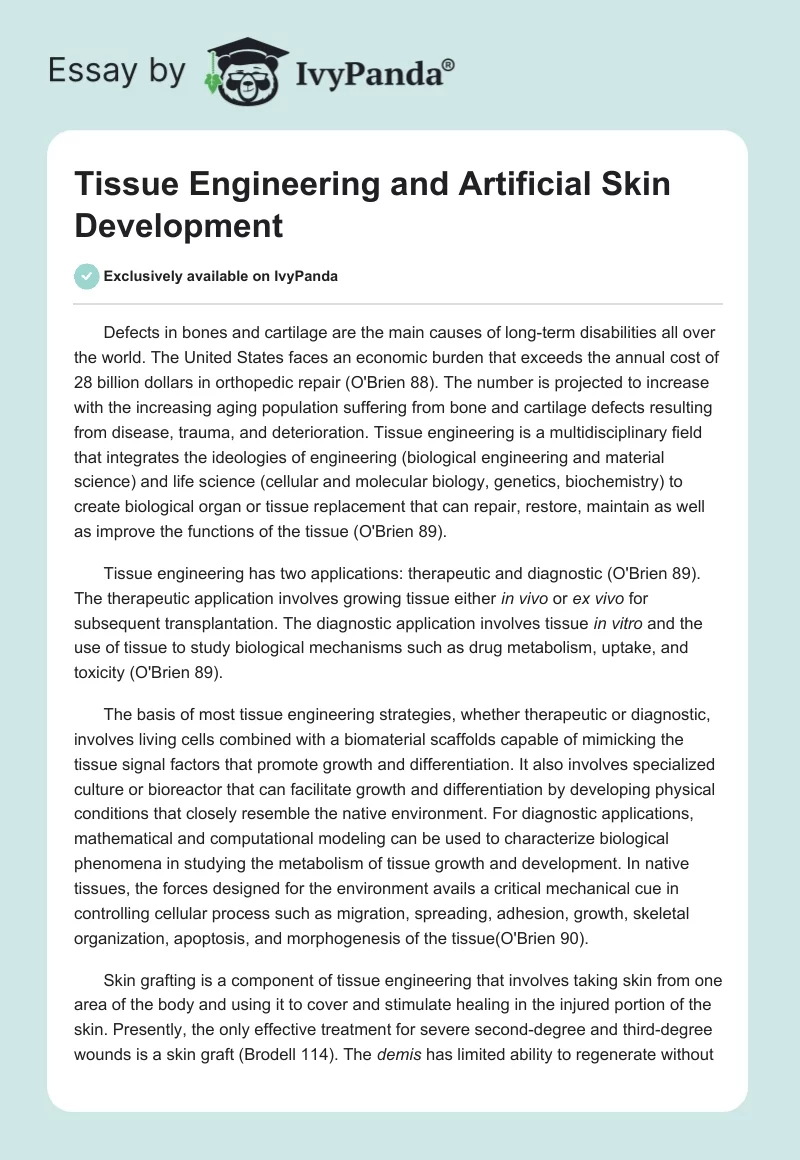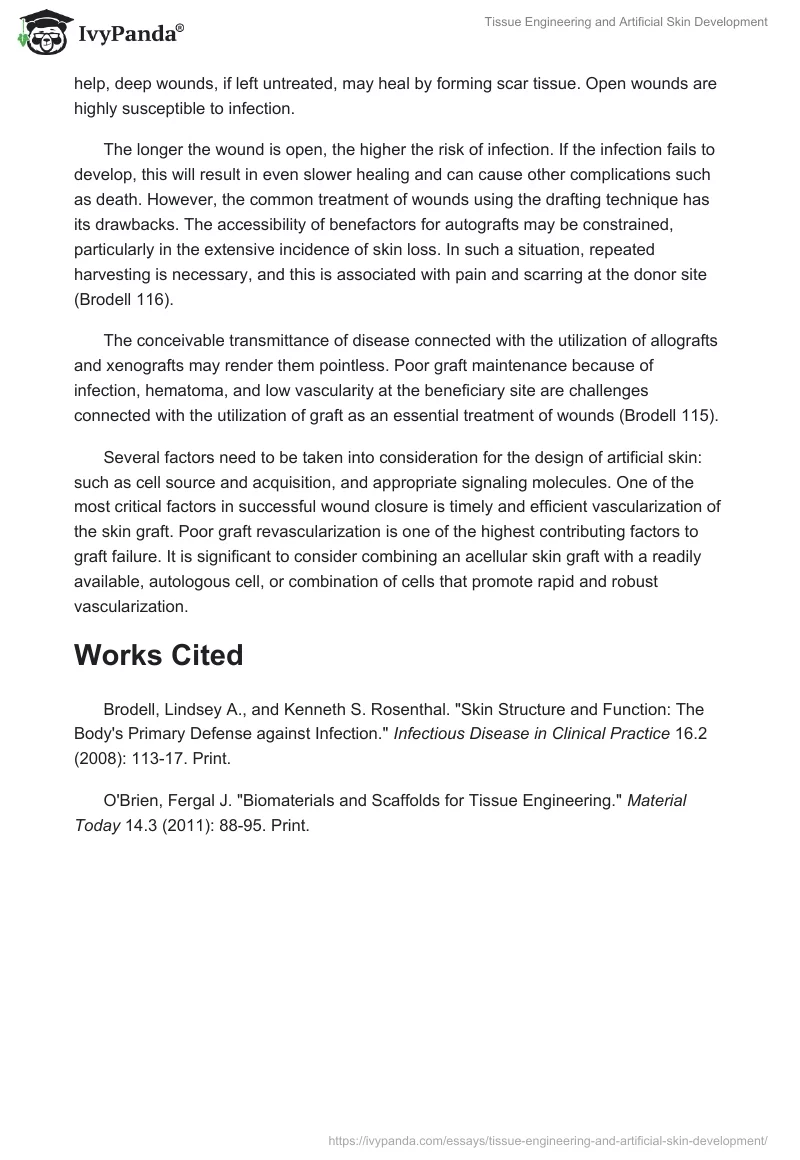Defects in bones and cartilage are the main causes of long-term disabilities all over the world. The United States faces an economic burden that exceeds the annual cost of 28 billion dollars in orthopedic repair (O’Brien 88). The number is projected to increase with the increasing aging population suffering from bone and cartilage defects resulting from disease, trauma, and deterioration. Tissue engineering is a multidisciplinary field that integrates the ideologies of engineering (biological engineering and material science) and life science (cellular and molecular biology, genetics, biochemistry) to create biological organ or tissue replacement that can repair, restore, maintain as well as improve the functions of the tissue (O’Brien 89).
Tissue engineering has two applications: therapeutic and diagnostic (O’Brien 89). The therapeutic application involves growing tissue either in vivo or ex vivo for subsequent transplantation. The diagnostic application involves tissue in vitro and the use of tissue to study biological mechanisms such as drug metabolism, uptake, and toxicity (O’Brien 89).
The basis of most tissue engineering strategies, whether therapeutic or diagnostic, involves living cells combined with a biomaterial scaffolds capable of mimicking the tissue signal factors that promote growth and differentiation. It also involves specialized culture or bioreactor that can facilitate growth and differentiation by developing physical conditions that closely resemble the native environment. For diagnostic applications, mathematical and computational modeling can be used to characterize biological phenomena in studying the metabolism of tissue growth and development. In native tissues, the forces designed for the environment avails a critical mechanical cue in controlling cellular process such as migration, spreading, adhesion, growth, skeletal organization, apoptosis, and morphogenesis of the tissue(O’Brien 90).
Skin grafting is a component of tissue engineering that involves taking skin from one area of the body and using it to cover and stimulate healing in the injured portion of the skin. Presently, the only effective treatment for severe second-degree and third-degree wounds is a skin graft (Brodell 114). The demis has limited ability to regenerate without help, deep wounds, if left untreated, may heal by forming scar tissue. Open wounds are highly susceptible to infection.
The longer the wound is open, the higher the risk of infection. If the infection fails to develop, this will result in even slower healing and can cause other complications such as death. However, the common treatment of wounds using the drafting technique has its drawbacks. The accessibility of benefactors for autografts may be constrained, particularly in the extensive incidence of skin loss. In such a situation, repeated harvesting is necessary, and this is associated with pain and scarring at the donor site (Brodell 116).
The conceivable transmittance of disease connected with the utilization of allografts and xenografts may render them pointless. Poor graft maintenance because of infection, hematoma, and low vascularity at the beneficiary site are challenges connected with the utilization of graft as an essential treatment of wounds (Brodell 115).
Several factors need to be taken into consideration for the design of artificial skin: such as cell source and acquisition, and appropriate signaling molecules. One of the most critical factors in successful wound closure is timely and efficient vascularization of the skin graft. Poor graft revascularization is one of the highest contributing factors to graft failure. It is significant to consider combining an acellular skin graft with a readily available, autologous cell, or combination of cells that promote rapid and robust vascularization.
Works Cited
Brodell, Lindsey A., and Kenneth S. Rosenthal. “Skin Structure and Function: The Body’s Primary Defense against Infection.” Infectious Disease in Clinical Practice 16.2 (2008): 113-17. Print.
O’Brien, Fergal J. “Biomaterials and Scaffolds for Tissue Engineering.” Material Today 14.3 (2011): 88-95. Print.


